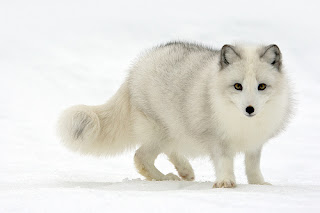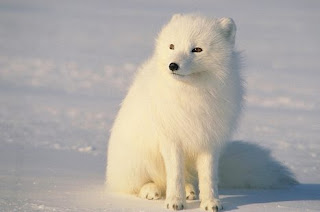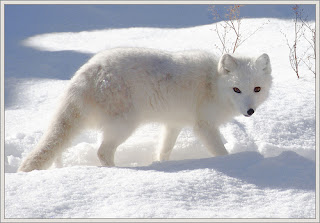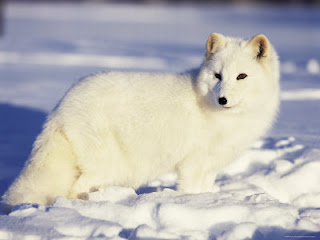 Arctic Fox Habitat
Arctic Fox HabitatArctic fox, also known as the white fox, polar fox or snow fox, a small fox native to the Arctic in the northern hemisphere, is common throughout the Arctic tundra biome. Arctic fox is pure white so that it can integrate into the snowy environment. Coat is very thick because of the cold temperature. It helps keep the fox warm and body temperature regulation. Their fur on the bottom of the feet. Have thick hair on the claws, but also allows them to easily stay in the forefront of the ice without slipping.
 Cute Arctic Fox
Cute Arctic FoxThey pointed out that the ears and a slender nose. Tip of the nose and eyes are very dark contrast, all white. They are thicker than the other varieties of fox but that is because they have levels of fat to provide them with additional insulation. In the warm period, this year's white fur can turn a shade of brown as well. This fox is found only in the coldest regions of the Arctic. Few animals in there, are able to live in this type of environment. Because of extreme cold, the Arctic fox is not only a nest there. They have very complex underground tunnel system. They use their homes to escape predators, and care for their young.
 Beautiful Arctic Fox
Beautiful Arctic FoxThe fox is more social than any other species. Them as a team to help care for the young. While women tend to stay close to their mothers even when they establish their own territory. They will come back even when they have their own offspring to share the responsibility.
 Wild Arctic Fox
Wild Arctic FoxWhen a mate on the Arctic fox, they do so for life. During the mating season, the Arctic fox is a very long. It spans from September to May. They have a very large garbage compared to other types of foxes. They generally have 5-8 young called kite. However, some of the garbage they have up to 25! The young born in the summer in the study, the mother has created for them.
 Arctic Fox is Endangered Animal
Arctic Fox is Endangered AnimalMortality rate for these young is very high. Only a small number of them will survive into the garbage from each of their maturity. They young are raised by both of their parents in part because they can learn how to find food, and get the power they need to survive.

